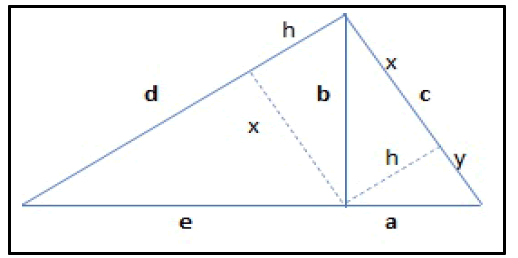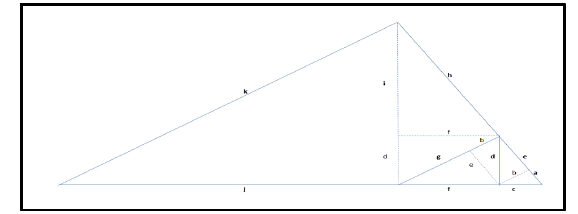On a special family of right triangles
Received: 01-Jun-2023, Manuscript No. PULJPAM-23-6489; Editor assigned: 05-Jun-2023, Pre QC No. PULJPAM-23-6489 (PQ); Reviewed: 12-Jun-2023 QC No. PULJPAM-23-6489; Revised: 01-Aug-2023, Manuscript No. PULJPAM-23-6489 (R); Published: 08-Aug-2023, DOI: 10.37532/2752-8081.23.7(6).1
Citation: Borrallo M. On a special family of right triangles. J Pure Appl Math 2023;7(6):1.
This open-access article is distributed under the terms of the Creative Commons Attribution Non-Commercial License (CC BY-NC) (http://creativecommons.org/licenses/by-nc/4.0/), which permits reuse, distribution and reproduction of the article, provided that the original work is properly cited and the reuse is restricted to noncommercial purposes. For commercial reuse, contact reprints@pulsus.com
Description
In this brief paper they are studied the right triangles {a, b, c} such that c– b=b−a
Studying congruent numbers, which can be defined as the positive integers such that can be the area of a right triangle with three rational number sides, I stumbled with an unnoticed (at least for me) property of the classic right triangle {a, b, c}={3, 4, 5}.
Suppose we had the mentioned triangle {a,b,c}={3,4,5}, and we constructed
another right triangle {c, d, e+a} as depicted in the image below.
Surprisingly, it can be noted that a+b+c=d+e

From this discovery, I noticed an entire family of right triangles with the following additional basic property apart of the fact of being right triangles:
c−b=b−a (1)
The symmetry properties involved in (1) are sufficient to cause some interesting relationships, such as the one described above. In this paper they are exposed the maths behind this right triangles family.
Basis
Let it be a2+b2=c2
Let it be c−b=b−a. Then, we get that
c+a=2b (2)
As a2+b2=c2, therefore
b2=c2−a2
b2=(c + a) (c−a)
b2=2b (c−a)
And finally, we get that
(c−a)=b/2 ( 3)
Subsequently, from (2) and (3) it is derived that
c+a/c−a=4
c+a=4c−4a
5a=3c
c/a=5/3 (4)
Substituting, 5a/3+a=2b
8a/6=b
b/a=4/3 (5)
From (4) and (5), we can derive the following interesting property, which will be useful afterwards:
a+b+c/b+c=(a+4a/3+5a/3)/(4a/3+5a/3)
a+b+c/b+c=4/3 (6)
Family properties
Now that the base triangle {a, b, c} and the relationships between its sides are perfectly defined, applying Thales theorem we have that:
d=c (h/y)
e=b (h/y)
b=a (h/y)
Therefore,
d+e=(c + b) (h/y) (7)
Also, by Thales theorem we have that
h/y=b/a
Therefore, using (4), (5) and (6) and substituting on (7), we get that
d+e=3a (4/3)
d+e=4a
As using (4) and (5) we get that
a+b+c=4a
Then we conclude that
a+b+c=d+e (8)
Also, we have that
d=c (h/y)=20a/9
e=b (h/y)=16a/9
b=a (h/y)=12a/9
And thus, we get a new triangle of the same family. This way, applying Thales theorem, we could continue constructing triangles as depicted below.







